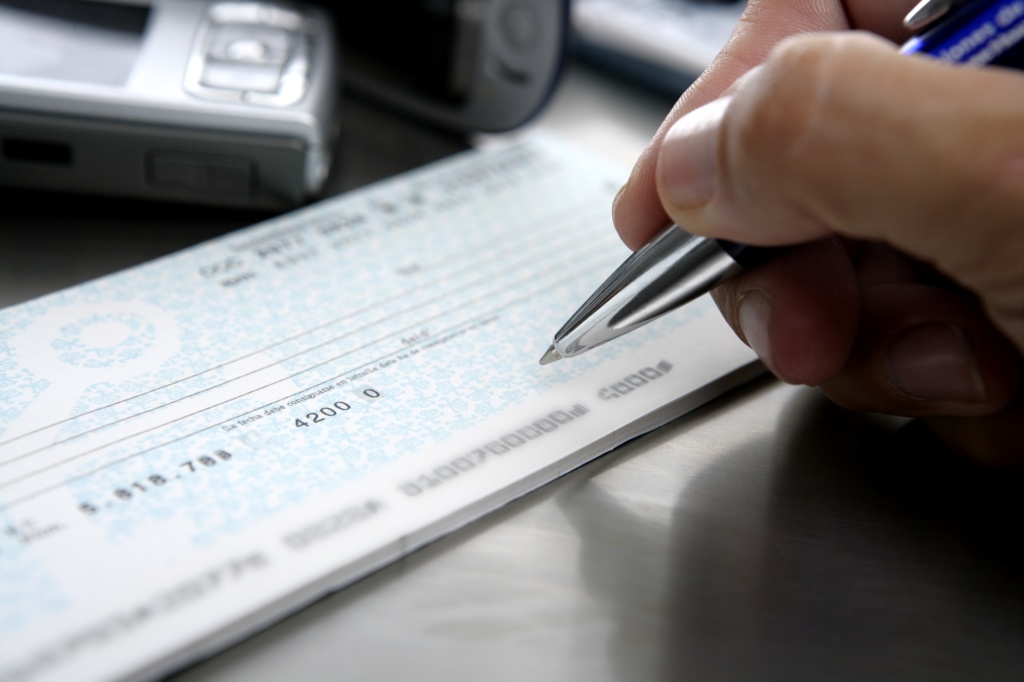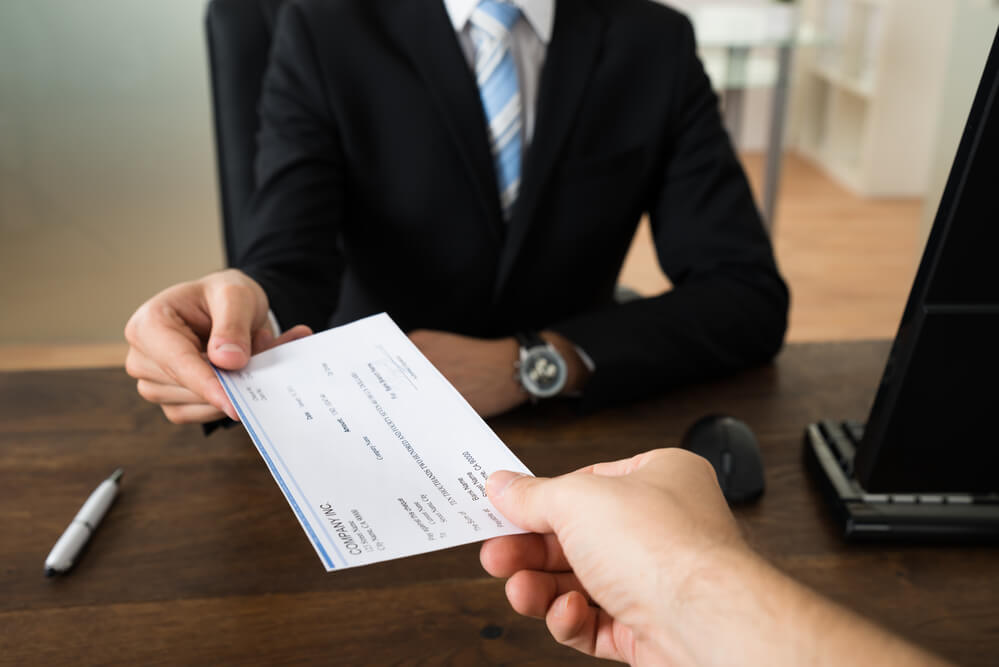Bank check vs money order: what is the difference

Photo: depositphotos.сom
Protecting your own finances from fraudsters and financial crimes is a constant problem with bank account holders. Security accounts are threatened by fraudsters and scams. Because of this, many Americans go to bank checks (cashier's check) and money orders (money order). These are more secure financial documents than debit cards and regular checks. GoBankingRates explains the difference between them.
What is the difference between a bank check and a money order?
The most tangible difference is how these documents are received and how much money can be spent on each of them. Money orders are sold virtually everywhere, but to get a bank check you need to go to a bank, credit union or other financial institution. That is why bank checks are considered more reliable forms of payment.
What is a bank check?
Cashier's checks are checks from financial institutions. Places to get a cashier's check are banks, credit unions, and other financial institutions. To buy a bank check, you need to make a payment and provide identification. The bank guarantees the safety of this money.
Bank checks cost up to $ 10. They are used to pay large sums of money. As a rule, there are no restrictions on the amount, since you pay the full cost of the check. To understand whether this financial instrument is suitable for you, you need to familiarize yourself with its pros and cons.
Bank Check Benefits:
- Unlimited face value. You yourself determine the value of your bank check - and deposit this amount.
- Widespread use. Bank checks are considered one of the safest forms of payment for the payer, since it is issued by the bank, not an individual, and the bank guarantees payment.
- Convenience. You do not need to have a bank account to buy a bank check.
Disadvantages of using bank checks:
- Cost. If you are a client of a financial institution where you buy a check, then in some cases you may be paid back the cost of the check. But, as a rule, to buy a bank check, you need to pay $ 10.
How to buy a bank check
To do this, visit the bank that creates and gives you a check, and perform the following actions:
- Show ID (passport or driver's license).
- Specify the payee name or company name.
- Specify the amount of the bank check.
- Specify your account number to transfer money from the bank account that writes the check. Alternatively, you can bring cash and pay the check amount on the spot.
- Pay the cost of the check statement.

Фото: Depositphotos
What is a money order?
Money order is a lot like a bank check. To complete a money order, you pay the seller of the order the full amount immediately. There is no opportunity to write off the amount from your account at the moment when the recipient cashes the order.
Domestic or international money orders can be purchased at various institutions - post offices, convenience stores, retail chains and gas stations. Generally, the money order amount should not exceed $1. You will need to show identification to make the purchase.
The value of a money order ranges from a few cents to $ 5. If you buy a money order with a credit card, your credit card company may write off an additional fee for issuing cash.
The advantages of money orders:
- Security. As a rule, money orders are considered safe forms of payment. Since you deposit the entire amount of the order in cash, there is no risk that the order will be returned due to a shortage of money in the sender’s account (this can happen with a check).
- Cost. Money order is inexpensive. It can cost less than a dollar, depending on the amount and place of purchase.
- Convenience. Money orders can be purchased in many stores, post offices and other places.
Disadvantages of money orders:
- Restrictions on admission. In some cases, money orders are not accepted instead of bank checks due to the fact that they are considered a less secure financial document.
- Restrictions on face value. Money orders cannot exceed $ 1000.
How to fill out a money order
After purchasing a money order, you need to fill in the following information:
- In line Pay to the Order of enter the name of the person or company you want to pay.
- In line From / Purchaser / Sender / Remitter enter your name.
- In the part of the form where it is written Purchaser, Signer for DrawerSign the label.
- If there are fields in the form Address (“Address”) or Phone number ("Phone Number"), they also need to fill out.
- In the Memorandum You can specify what this payment is for.
- Leave the money order form blank - the recipient will be able to redeem it and sign it.
You can cash out a money order in the same place where you can buy it: in the retail network, in small supermarkets and grocery stores, special offices for cashing checks and even in banks. You will need to provide proof of identity and possibly pay a fee for the operation. After submitting the document and the order itself, you will be given the amount of cash indicated in the order.
Important! In the post office you can cash out only the postal money order. US Postal Service does not cash out money orders issued by other agents. If you need to send this order to another person, you can buy it at the post office and send it directly from the branch. You can do the same with money transfers. Western Union or MoneyGram: buy and send from the nearest office, and your recipient will pick it up at the office of the same company in your area of residence.
If you have lost a money order, you will renew it, but for a commission. The seller must be informed about the loss of the order - they will help you to issue a refund or replacement of the order.
When is it better to use a bank check, and when is a money order?
It may seem to you that checks and orders are interchangeable, but in each situation one of these tools is more profitable than the other.
In what situations it is better to use money order:
- You need to send a payment by mail, and you do not want to send a check or cash.
- You have a very precisely calculated budget, and you want to avoid a shortage of money in your account when cashing out the check you have written.
- You transfer money to a person you don’t know very well and don’t want to give him a personal check.
On the other hand, it is better to use bank check, if a:
- The payment amount exceeds the limit for money orders.
- You choose a safer financial instrument, which is a bank check.
For example, a money order is fine if you pay for goods purchased by mail from an unfamiliar person. If you need to make a down payment for an apartment, then it is better to write a bank check.
Both types of documents - both a check and an order - can be falsified, so it is important to treat them with the same seriousness as other types of payment. In addition, although checks and orders should be accepted everywhere, first check with the recipient to see if they accept the type of document that you have chosen, since not all companies or individuals accept both types of financial instruments.
Alternative to bank checks and money orders
If none of these payment methods are suitable for you, consider other payment methods. For example:
- Bank Guaranteed Check (Certified checks): The bank issuing such a check ensures that there is enough money in the account of the person who writes out this document to cover when it is cashed. The bank also guarantees the signature of the account holder on the check. Checks guaranteed by the bank will be suitable in situations where the recipient does not trust the person who writes the check and wants to get a guarantee of money in the account to cover it.
- Travel check (Traveler’s checks): They are usually used to travel to other countries instead of cash. A bank or other financial institution guarantees the security of this financial instrument. If you lose your traveller's check or you have it stolen, you can cancel it and get a new one in return.
- Remittance (Wire transfers): Money can be transferred electronically using a money transfer. This is usually done to send finances over long distances.
In some cases, these alternatives may be better than a money order or bank check. Although in normal situations that do not require special conditions, you should be enough of these most common ways to transfer money.
See also:
What is better: cash or credit card
Seven things worth paying by credit card
5-year-old boy presented a check for failing to appear on the birthday of a friend
Subscribe to ForumDaily on Google NewsDo you want more important and interesting news about life in the USA and immigration to America? — support us donate! Also subscribe to our page Facebook. Select the “Priority in display” option and read us first. Also, don't forget to subscribe to our РєР ° РЅР ° Р »РІ Telegram and Instagram- there is a lot of interesting things there. And join thousands of readers ForumDaily New York — there you will find a lot of interesting and positive information about life in the metropolis.











